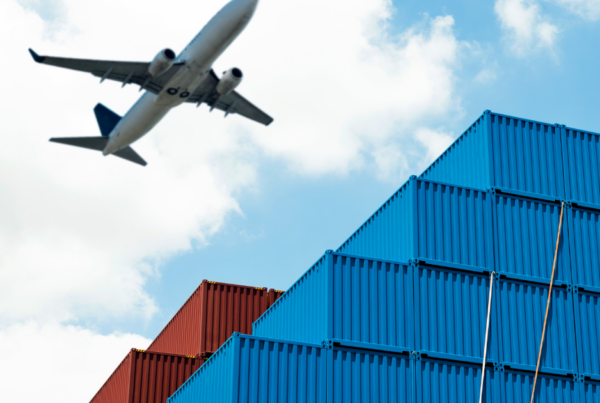In the first stage of a three-part growth strategy the Northwest Seaport Alliance will be increasing capacity, modernizing and enabling a larger megaship capacity in an effort to handle more containers and traffic to keep up with the rapidly expanding Vancouver port system. The Northwest Seaport Alliance focuses the expansion on infrastructure upgrades that will be foundational to the project. CFI is poised to handle the increasing refrigerated perishable traffic through the ports of Tacoma and Seattle through cross-training and additional knowledgeable staff.
Currently the Seattle-Tacoma port is only operating at 60% capacity, so the effectiveness of the port will need to be improved to boost efficiency. One way they’re achieving this is by combining two of the nine terminals into a mega-terminal to service the post-Panamax megaships that require a deeper dredge and wider berth greater than some US ports can support. Seattle-Tacoma will be dredged to 57 feet and outfitted with larger cranes to manage these behemoth vessels.
One concern is the throughput of these mega-terminals and the impact it will have on the trucking community. Currently, average wait times exceed 90 minutes. At present shippers complain about paying additional wait time at the terminals as a cost outside of their control. With the larger vessels calling these mega-terminals, the wait time is expected to increase substantially even with planned process improvements.
The improvements are coming in fast as Seattle-Tacoma works to recover market share from the rapidly expanding Vancouver port just to the north. While Vancouver sees an 80-85% capacity operation, they’re around $600-$800 cheaper per container and served by the CN rail via Chicago to reduce transit time to the west coast for a bargain. In fact, Vancouver is seeing a year-on-year increase in US cargo as it grows. East coast and gulf ports are also growing their share of Asian cargo as ships work to navigate shutdowns and move through the Suez Canal instead of across the Pacific to utilize the Seattle-Tacoma port. So far, the Seattle-Tacoma market share is down 5.5% since 2015.
According to Joc.com, “The international container volume handled at the Northwest Seaport Alliance last year totaled 3,058,346 laden and empty TEU, a decline of 1.7 percent from 2018. Laden import containers totaled 1,369,251 TEU, down 5.7 percent, while laden export containers totaled 913,332 TEU, a decline of 4.2 percent from 2018, according to NWSA statistics.”
The expansion of these ports is a benefit for CFI and our perishables cargo as we’re uniquely equipped to handle the sensitive cargo that’s moving through both Seattle and Vancouver. The expansion and access to these megaships will allow us to utilize the extra capacity for refrigerated cargo carrying perishables. As more focus falls on the efficiency of ocean cargo and equipment, efficiency and capacity come under scrutiny for delays on cargo due to the Chinese New Year shutdown and, superseding Covid-19 isolation practices, we’re excited to hear there are more developments coming on the horizon. Shutdowns are temporary and once the freight starts moving, the improvements at Seattle-Tacoma will be an excellent tool for CFI to keep your cargo fresh and on schedule.





I need a dedicated Box Truck for load below
Picking up Bristol, IN
Delivery Bronx NY
Items being shipped Automotive Motor
Weight, 350 pounds.
Product Dimensions, 48x48x40 inches.
LIFT GATE REQUIRED
Kindly get a rate and transit time for the shipment , thank you
I need a dedicated Box Truck /Sprinter Service for a load below
Picking up Morgantown, WV 26501
Delivery Bronx NY 10457
Items being shipped 16 LOOSE CAR TIRES
Weight, 57.2 pounds.
Product Dimensions, 32.6 x 11.5 x 32.6 inches.
Total lbs 850 LBS
NO LIFT GATE REQUIRED
Kindly get a rate and transit time for the shipment , thank you
Good Morning
I hope you’re doing well.
I’m Tina, At Cargo Convoy Inc., we offer reliable FCL Drayage and FTL services across the U.S. and Canada. Our dedicated fleet and logistics team ensure efficient handling at every step.
Our services include:
· Container Drayage (Import & Export, Reefer)
· Hazmat & Heavy Hauls
· Rail-Intermodal
· Transloading
· Available Trailers (Dry Van, Flatbed, Reefer)
· Warehousing Facilities
Additionally, we also have drivers with TWIC cards to assist with air-import/export shipments at major locations.
If you have any upcoming shipments, I’d be happy to provide quotes or discuss your needs.
Please add my email address, tina@cargoconvoy.co , to your daily load list. I would also appreciate it if you could send me your available loads and lanes so that we can explore opportunities to assist you with your shipments.
Looking forward to hearing from you!
Kind Regards,
My name is Celine White, and I represent Ryaan Logistics Group LLC. We are a full-service Transportation Service Provider and industry leader in the United States and Canada. Our dedicated network of Preferred Partner Carriers helps customers like you reduce cycle times, increase consistency, and add value to your network.
At Insite Logistics, our team has decades of experience in the freight and logistics services industries. We pride ourselves on delivering value by streamlining your daily responsibilities, improving transparency and communication, and driving greater efficiencies.
**Some highlights about Insite Logistics:**
* TIA Member Brokerage Company
* One of the largest asset direct platforms in the United States and Canada, with over 20,000 active Preferred Partner Carriers and Owner Operators in our proprietary database
* Agents in the US, Canada, and international offices
**We specialize in:**
* FLATBED/ FLATBED WITH FORKLIFTS
* STEP DECK
* REEFER
* DRY VAN
* DRY VAN (53 SWING DOORS)
* CONESTOGA
* HOTSHOTS
* BOX TRUCK
* Maxi
* Drayage and Intermodal
We offer coast-to-coast and cross-border TL and LTL services in all modes, with track and trace capabilities and 24/7/365 customer service and visibility. We also offer flexible TMS+ partnered solutions customized to customer needs and KPIs to reduce risk, manage spend, and improve efficiencies.
Ryaan has a long history of partnering with carriers. By collaborating with Ryaan Logistics Group LLC, you will gain a partner with a reliable network, industry-leading experience, excellent customer service, and specialized account management.
Thank you for your time. For your reference, I have attached our company profile, including insurance, W9, Carrier Authority, and Brokerage Authority.
Please add my email address, TRUCKS44@RYAANTRANS.COM, to your daily load list. I would also appreciate it if you could send me your available loads and lanes so that we can explore opportunities to assist you with your shipments.
Hello Team,
I’m Jaden from 10x Logistics. We offer regular shipping lanes and consistent, high-quality service.
Our services include:
* Drayage and Transloading (20FT//40FT)
* Over-the-Road (OTR) Transportation
* Reefer, Overweight, and Top Pick Container Handling
* Transloading Services
* We do all types of shipments
* Nationwide and Cross-Border Coverage (USA and Canada)
We pride ourselves on simplified pallet pricing, direct telephone support, online tracking, international shipping, and a 99.8% claims-free record.
Thank you!!
Hello Mark,
I hope you are doing well.
Request you to please add me to your load distribution list.
Any containers coming out of NY/NJ – LA/LB – SEATTLE – CHARLESTON – HOUSTON – NORFOLK – TACOMA – SAVANNAH – OAKLAND – CLEVELAND, or any other PORT/RAIL in the United States,
I can undoubtedly provide you the best possible rates.
I can surely assist you with any of the lanes you are currently working on, and I can handle any freight challenges.
Drayage (20’/40’/53′ – Open Top (In-Out Gauge) – ISO Tanks)
OTR
Project cargo services
Transloading
Overweight, Oversized, and Heavy Hauling, among other things.
Eager to roll on your lanes! Would you mind sharing the next shipments?
Write to me at oliver.smith@fusionfreights.com
Eagerly await you I’m looking forward to hearing back from your response.
Thank you.
Hello Mark,
I hope you are doing well.
Request you to please add me to your load distribution list.
Any containers coming out of NY/NJ – LA/LB – SEATTLE – CHARLESTON – HOUSTON – NORFOLK – TACOMA – SAVANNAH – OAKLAND – CLEVELAND, or any other PORT/RAIL in the United States,
I can undoubtedly provide you the best possible rates.
I can surely assist you with any of the lanes you are currently working on, and I can handle any freight challenges.
Drayage (20’/40’/53′ – Open Top (In-Out Gauge) – ISO Tanks)
OTR
Project cargo services
Transloading
Overweight, Oversized, and Heavy Hauling, among other things.
Eager to roll on your lanes! Would you mind sharing the next shipments?
Write to me at oliver.smith@fusionfreights.com
Eagerly await you I’m looking forward to hearing back from your response.
Thank you.
Hi [Name],
If you’re in need of a freight broker who delivers more than just promises, you’ve come to the right place! I’m committed to offering top-notch freight services that are fast, efficient, and competitively priced.
With years of experience in the logistics industry, I understand the importance of smooth, hassle-free shipping. My goal is simple: to get your load where it needs to be, on time, every time.
Let’s connect and discuss how I can make your shipping process easier and more cost-effective. Feel free to reply here or call me directly at 323-372-9317.
Looking forward to working with you!
Best regards,
Paul Meza
EastWest Freight LLC
Address: 8551 Dalewood Avenue, Pico Rivera, CA 90660
Phone: 323-372-9317
Email: Paul.M@EastWestFreightLLC.com
Website: http://www.eastwestfreightllc.com
US-DOT: 4188012
MC: 1613504
Hi Mark,
Hope you’re doing well!
I’m Ed from Eternity Logistic LLC. We work with over 1,000 companies, helping them move freight efficiently while keeping costs down. We’ve got a solid network of 1,550+ carriers covering TL and LTL across the U.S. and Canada.
So you have everything handy. Would love to see how we can team up and get you some great rates while making your job easier.
We handle:
Full Truckload (FTL)
Drayage
Intermodal
Last-Mile Delivery
Warehousing
Less-Than-Truckload (LTL)
Let me know if I can quote a couple of loads for you. We can bring some real value to your operation. Just shoot me a quick reply when you get this! I’m looking forward to working together.